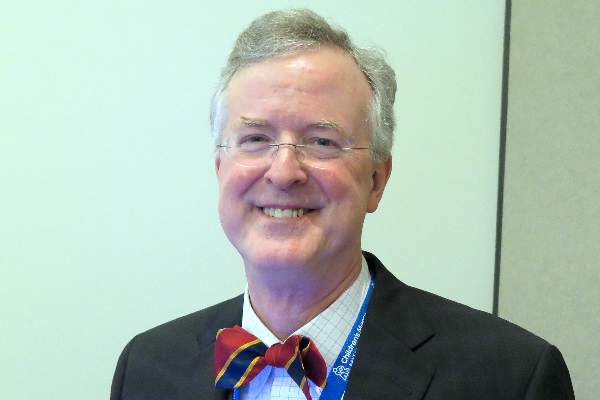User login
SAN DIEGO – More adolescents received the HPV vaccine when the vaccine was discussed in the context of other vaccines, and when the providers said they expected that the vaccine would be administered at the visit, results from a multisite study suggest.
Patients were more likely to get the HPV vaccine when it was discussed in context with other due vaccines (94% vs. 71%; P< .01) and when it was offered in the context of expectant provision, compared with all other communication types (100% vs. 76%; P< .01), researchers led by Dr. Paul M. Darden wrote in a poster abstract presented at the annual meeting of the Pediatric Academic Societies.
In a study conducted at six medical practices and two practice-based research networks, Dr. Darden, chief of the section of general and community pediatrics at the University of Oklahoma, and his associates set out to describe the types of recommendations for adolescent vaccines that nurses and clinicians give, how they vary with the type of vaccine, and whether the type of recommendation is associated with adolescent receipt of HPV vaccine.
To accomplish this, well visits where vaccines were due in patients aged 11-17 years were audiotaped and transcribed. Nurse and clinician texts were coded by validated coders. Clinician recommendations for Tdap, MCV4 and HPV were coded separately into one of five communication categories: none, passive (today you are due for ...), active (I really recommend ...), collaborative (today would you like to receive ...), and expectant provision (today you will get ...).
The researchers analyzed results from 106 patient visits (a range of 15-20 per practice), with 58 due for MCV4, 49 due for Tdap, and 101 due for HPV vaccine. Slightly more than half of the adolescents (53%) were 11 or 12 years of age, while the remainder ranged in age from 13 to 17 years. Nearly two-thirds (64%) were male, 38% were black, 28% were white, 27% were Hispanic, and the rest were from other ethnicities. A nurse assessment was audiotaped in 63 of the visits.
If the nurse mentioned that the patient was due for HPV vaccine, the patient was more likely to be vaccinated with HPV vaccine than if the nurse either did not address or only generally addressed the patient’s vaccination status (100% vs. 72%; P<i/>= .05). No communication for HPV was less common than for MCV and Tdap vaccines (6%, 14%, and 16%, respectively; P<i/>= .03.), while a collaborative recommendation (today would you like to receive …) was more common with the HPV vaccine (36% vs. 9% for MCV and 6% for Tdap; P< .01)
“The CDC recommends clinicians use a strong recommendation with patients for HPV vaccine delivery,” the researchers wrote. “Our research reflects that adolescents are more likely to receive vaccinations after any type of recommendation, but some appear to be more effective than others.” The results “can help inform the organization of pediatric vaccine delivery practices and the training of clinicians. Further research is needed in effective communication to identify the best way to discuss and deliver vaccines to adolescent patients.”
The study was funded by a grant through the Department of Health & Human Services, Health Resources and Services Administration, Maternal and Child Health Research Program. The researchers reported having no relevant financial conflicts.
On Twitter @dougbrunk
SAN DIEGO – More adolescents received the HPV vaccine when the vaccine was discussed in the context of other vaccines, and when the providers said they expected that the vaccine would be administered at the visit, results from a multisite study suggest.
Patients were more likely to get the HPV vaccine when it was discussed in context with other due vaccines (94% vs. 71%; P< .01) and when it was offered in the context of expectant provision, compared with all other communication types (100% vs. 76%; P< .01), researchers led by Dr. Paul M. Darden wrote in a poster abstract presented at the annual meeting of the Pediatric Academic Societies.
In a study conducted at six medical practices and two practice-based research networks, Dr. Darden, chief of the section of general and community pediatrics at the University of Oklahoma, and his associates set out to describe the types of recommendations for adolescent vaccines that nurses and clinicians give, how they vary with the type of vaccine, and whether the type of recommendation is associated with adolescent receipt of HPV vaccine.
To accomplish this, well visits where vaccines were due in patients aged 11-17 years were audiotaped and transcribed. Nurse and clinician texts were coded by validated coders. Clinician recommendations for Tdap, MCV4 and HPV were coded separately into one of five communication categories: none, passive (today you are due for ...), active (I really recommend ...), collaborative (today would you like to receive ...), and expectant provision (today you will get ...).
The researchers analyzed results from 106 patient visits (a range of 15-20 per practice), with 58 due for MCV4, 49 due for Tdap, and 101 due for HPV vaccine. Slightly more than half of the adolescents (53%) were 11 or 12 years of age, while the remainder ranged in age from 13 to 17 years. Nearly two-thirds (64%) were male, 38% were black, 28% were white, 27% were Hispanic, and the rest were from other ethnicities. A nurse assessment was audiotaped in 63 of the visits.
If the nurse mentioned that the patient was due for HPV vaccine, the patient was more likely to be vaccinated with HPV vaccine than if the nurse either did not address or only generally addressed the patient’s vaccination status (100% vs. 72%; P<i/>= .05). No communication for HPV was less common than for MCV and Tdap vaccines (6%, 14%, and 16%, respectively; P<i/>= .03.), while a collaborative recommendation (today would you like to receive …) was more common with the HPV vaccine (36% vs. 9% for MCV and 6% for Tdap; P< .01)
“The CDC recommends clinicians use a strong recommendation with patients for HPV vaccine delivery,” the researchers wrote. “Our research reflects that adolescents are more likely to receive vaccinations after any type of recommendation, but some appear to be more effective than others.” The results “can help inform the organization of pediatric vaccine delivery practices and the training of clinicians. Further research is needed in effective communication to identify the best way to discuss and deliver vaccines to adolescent patients.”
The study was funded by a grant through the Department of Health & Human Services, Health Resources and Services Administration, Maternal and Child Health Research Program. The researchers reported having no relevant financial conflicts.
On Twitter @dougbrunk
SAN DIEGO – More adolescents received the HPV vaccine when the vaccine was discussed in the context of other vaccines, and when the providers said they expected that the vaccine would be administered at the visit, results from a multisite study suggest.
Patients were more likely to get the HPV vaccine when it was discussed in context with other due vaccines (94% vs. 71%; P< .01) and when it was offered in the context of expectant provision, compared with all other communication types (100% vs. 76%; P< .01), researchers led by Dr. Paul M. Darden wrote in a poster abstract presented at the annual meeting of the Pediatric Academic Societies.
In a study conducted at six medical practices and two practice-based research networks, Dr. Darden, chief of the section of general and community pediatrics at the University of Oklahoma, and his associates set out to describe the types of recommendations for adolescent vaccines that nurses and clinicians give, how they vary with the type of vaccine, and whether the type of recommendation is associated with adolescent receipt of HPV vaccine.
To accomplish this, well visits where vaccines were due in patients aged 11-17 years were audiotaped and transcribed. Nurse and clinician texts were coded by validated coders. Clinician recommendations for Tdap, MCV4 and HPV were coded separately into one of five communication categories: none, passive (today you are due for ...), active (I really recommend ...), collaborative (today would you like to receive ...), and expectant provision (today you will get ...).
The researchers analyzed results from 106 patient visits (a range of 15-20 per practice), with 58 due for MCV4, 49 due for Tdap, and 101 due for HPV vaccine. Slightly more than half of the adolescents (53%) were 11 or 12 years of age, while the remainder ranged in age from 13 to 17 years. Nearly two-thirds (64%) were male, 38% were black, 28% were white, 27% were Hispanic, and the rest were from other ethnicities. A nurse assessment was audiotaped in 63 of the visits.
If the nurse mentioned that the patient was due for HPV vaccine, the patient was more likely to be vaccinated with HPV vaccine than if the nurse either did not address or only generally addressed the patient’s vaccination status (100% vs. 72%; P<i/>= .05). No communication for HPV was less common than for MCV and Tdap vaccines (6%, 14%, and 16%, respectively; P<i/>= .03.), while a collaborative recommendation (today would you like to receive …) was more common with the HPV vaccine (36% vs. 9% for MCV and 6% for Tdap; P< .01)
“The CDC recommends clinicians use a strong recommendation with patients for HPV vaccine delivery,” the researchers wrote. “Our research reflects that adolescents are more likely to receive vaccinations after any type of recommendation, but some appear to be more effective than others.” The results “can help inform the organization of pediatric vaccine delivery practices and the training of clinicians. Further research is needed in effective communication to identify the best way to discuss and deliver vaccines to adolescent patients.”
The study was funded by a grant through the Department of Health & Human Services, Health Resources and Services Administration, Maternal and Child Health Research Program. The researchers reported having no relevant financial conflicts.
On Twitter @dougbrunk
AT THE PAS ANNUAL MEETING
Key clinical point: Expectant provision was the most successful communication method for assuring HPV vaccination.
Major finding: Patients were more likely to get the HPV vaccine when it was discussed in context with other due vaccines (94% vs. 71%; P< .01) and when it was offered in the context of expectant provision, compared with all other communication types (100% vs. 76%; P< .01).
Data source: A study of 106 adolescent patient visits to six medical practices and two practice-based research networks (a range 15 to 20 per practice), with 58 due MCV4, 49 due Tdap, and 101 due for HPV vaccine.
Disclosures: The study was funded by a grant through the Department of Health & Human Services, Health Resources and Services Administration, Maternal and Child Health Research Program. The researchers reported having no relevant financial conflicts.

